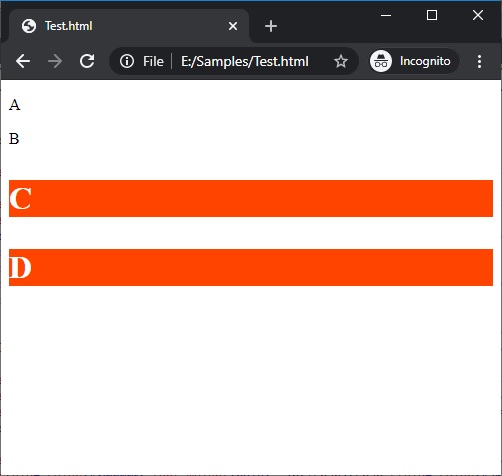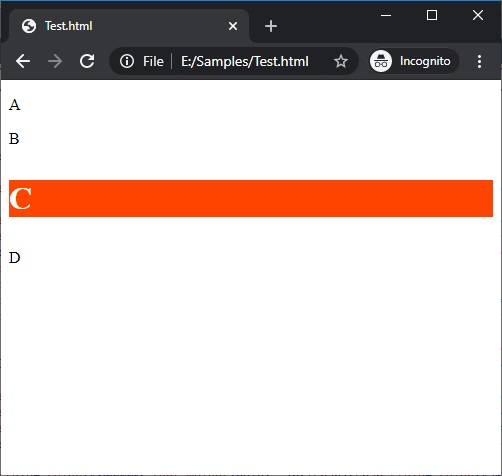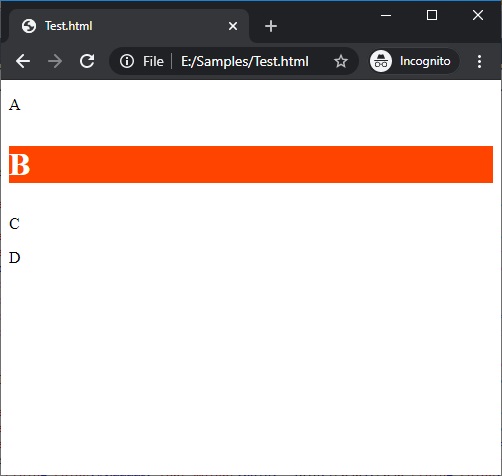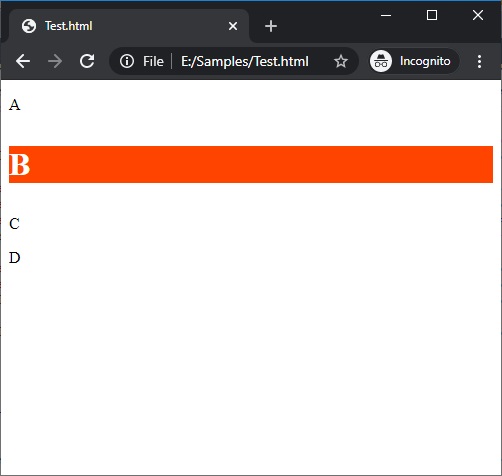Home »
CSS
CSS Combinators
CSS Combinators: Here, we are going to learn about the Combinators in CSS (Cascading Style Sheet) with Examples.
Submitted by Anjali Singh, on February 01, 2020
Combinators in CSS are used to explain a relationship between two selectors. A selector can be simple to complex and we can combine any two selectors through combinator.
There are four different combinators in CSS,
- General sibling selector (~)
- Adjacent sibling selector (+)
- Child selector (>)
- Descendant selector (space)
Let us understand these combinators one by one...
1) General sibling selector (~)
It is denoted by ~. The general sibling selector as its name suggests is useful to select the elements that are the sibling to a specified element. This can also be used to select the elements who share the same parent element.
Syntax:
element1 ~ element2{
//CSS styling
}
Example:
<!DOCTYPE html>
<html>
<head>
<style>
div ~ p {
font-weight: bold;
background-color: #f40;
color: #fff;
font-size: 32px;
}
</style>
</head>
<body>
<p>A</p>
<div>
<p>B</p>
</div>
<p>C</p>
<p>D</p>
</body>
</html>
Output

In the above example, two <p> are selected i.e. "C" and "D" because they are a sibling to specified element <div>.
2) Adjacent sibling selector (+)
It is denoted by +. As its name suggests adjacent sibling selector is used to selecting the element that is adjacent to a specified element. This combinator only selects one element that is next to a specified tag.
Syntax:
element1 + element2{
//CSS styling
}
Example:
<!DOCTYPE html>
<html>
<head>
<style>
div + p {
font-weight: bold;
background-color: #f40;
color: #fff;
font-size: 32px;
}
</style>
</head>
<body>
<p>A</p>
<div>
<p>B</p>
</div>
<p>C</p>
<p>D</p>
</body>
</html>
Output
Output

In the above example, the <p> i.e. "C" is selected as it is a sibling to the specified element <div>.
3) Child selector (>)
It is denoted by >. The child selector selects all the elements that are children of a specified element. It can select more than one element.
Syntax:
element1 > element2{
//CSS styling
}
Example:
<!DOCTYPE html>
<html>
<head>
<style>
div > p {
font-weight: bold;
background-color: #f40;
color: #fff;
font-size: 32px;
}
</style>
</head>
<body>
<p>A</p>
<div>
<p>B</p>
</div>
<p>C</p>
<p>D</p>
</body>
</html>
Output

In the above example <p> element selected as it is a child of the specified element <div>.
4) Descendant selector (space)
It is denoted by space between two elements. The descendant selector selects all the elements that are descendant to a specified element. This combinator is useful to combine the two selectors such that selected elements have an ancestor the same as the first selector element.
Syntax:
element1 element2 {
//CSS styling
}
Example:
<!DOCTYPE html>
<html>
<head>
<style>
div p {
font-weight: bold;
background-color: #f40;
color: #fff;
font-size: 32px;
}
</style>
</head>
<body>
<p>A</p>
<div>
<p>B</p>
</div>
<p>C</p>
<p>D</p>
</body>
</html>
Output

In the above example <p> is selected because it is a descendant of specified element <div>.
CSS Tutorial & Examples »
Advertisement
Advertisement